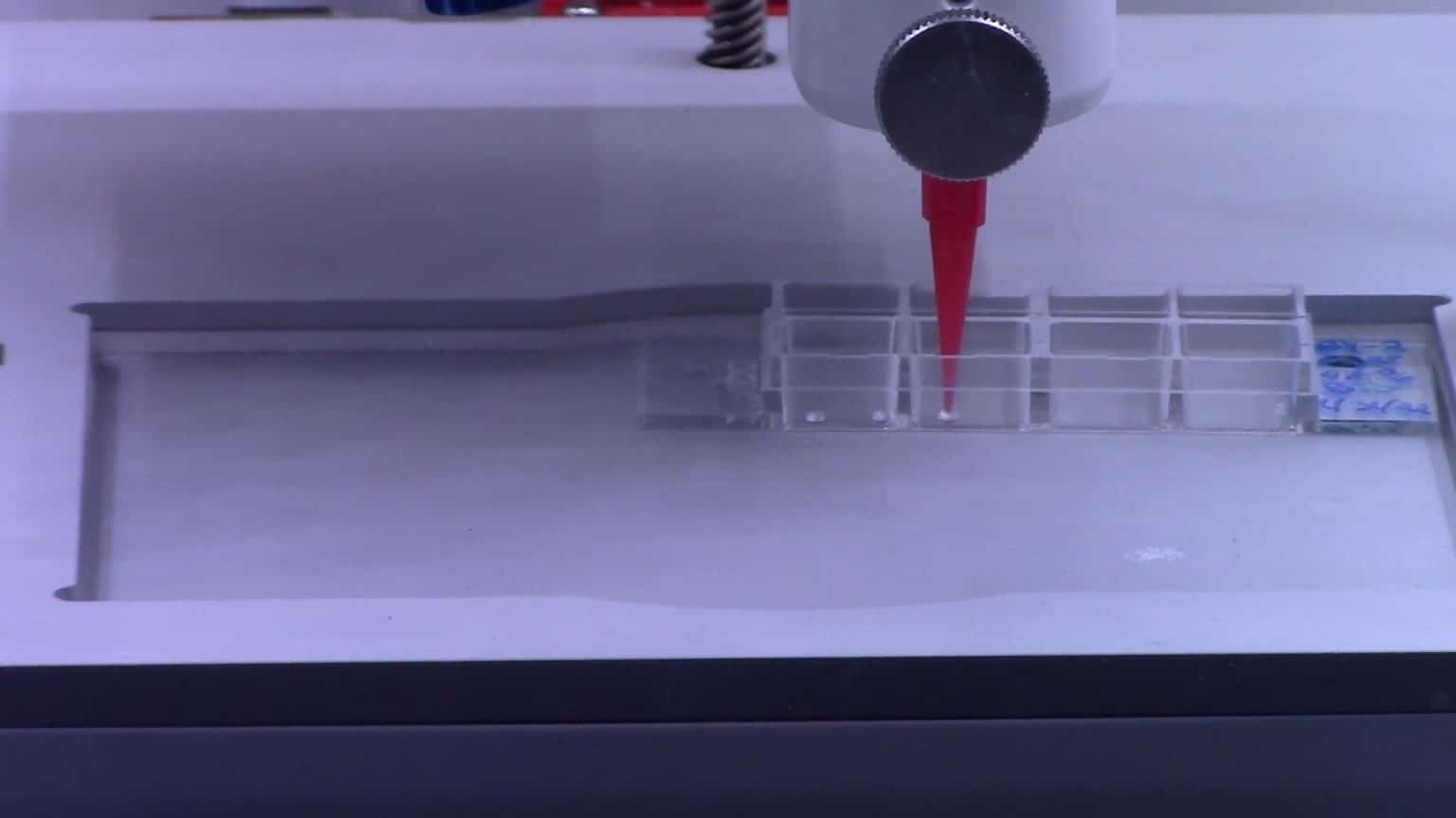Recent research from North Carolina State University demonstrates a reproducible method of analyzing cellular communication among several types of plant cells using a 3D printer by bioprinting these cells.

Plant cells are bioprinted by a 3D printer that has a few necessary tweaks. Image Credit: Lisa Van den Broeck.
Studying how plant cells interact with each other and with their environment is essential for comprehending plant cell functions, which might eventually lead to the development of superior crop varieties and ideal growing environments.
The scientists bio-printed cells from Arabidopsis thaliana and soybeans to investigate not only whether plant cells will live after being bioprinted—and for how long—but also how they obtain and modify their identity and function.
A plant root has a lot of different cell types with specialized functions. There are also different sets of genes being expressed; some are cell-specific. We wanted to know what happens after you bioprint live cells and place them into an environment that you design. Are they alive and doing what they should be doing?
Lisa Van den Broeck, Study First Author and Postdoctoral Researcher, North Carolina State University
With a few slight modifications, 3D bioprinting plant cells are mechanically comparable to printing ink or plastics.
Instead of 3D printing ink or plastic, we use ‘bioink,’ or living plant cells. The mechanics are the same in both processes with a few notable differences for plant cells: an ultraviolet filter used to keep the environment sterile and multiple print heads—rather than just one—to print different bioinks simultaneously.
Lisa Van den Broeck, Study First Author and Postdoctoral Researcher, North Carolina State University
Protoplasts, living plant cells lacking cell walls, were bioprinted using nutrients, growth hormones, and agarose, a thickening agent derived from seaweed. Agarose, like mortar that reinforces bricks in a building's wall, gives cells strength and scaffolding.
We found that it is critical to use proper scaffolding. When you print the bioink, you need it to be liquid, but when it comes out, it needs to be solid. Mimicking the natural environment helps keep cellular signals and cues occurring as they would in soil.
Ross Sozzani, Study Co-Corresponding Author and Professor, Plant and Microbial Biology, North Carolina State University
According to the study, more than half of the 3D bio-printed cells were live and multiplied into small cell colonies called microcalli.
Van den Broeck says: “We expected good viability on the day the cells were bioprinted, but we had never maintained cells past a few hours after bioprinting, so we had no idea what would happen days later. Similar viability ranges are shown after manually pipetting cells, so the 3D printing process doesn’t seem to do anything harmful to cells.”
“This is a manually difficult process, and 3D bioprinting controls the pressure of the droplets and the speed at which the droplets are printed. Bioprinting provides better opportunity for high throughput processing and control over the architecture of the cells after bioprinting, such as layers or honeycomb shapes,” explained Sozzani.
Additionally, the investigators bio-printed individual cells to see if they might divide and multiply or regenerate. The results demonstrated that varied mixtures of nutrients and scaffolding were required by Arabidopsis root and shoot cells for optimal viability.
Also, over 40% of individual soybean embryonic cells continued to proliferate over the course of two weeks after bioprinting to form microcalli.
Sozzani adds, “This shows that 3D bioprinting can be useful to study cellular regeneration in crop plants.”
The researchers also looked at the cellular makeup of the bioprinted cells. High proliferation rates and the lack of stable identities are characteristics of embryonic soybean cells and Arabidopsis root cells. In other words, these cells can differentiate into many cell types much like human or animal stem cells.
Van den Broeck notes, “We found that bioprinted cells can take on the identity of stem cells; they divide and grow and express specific genes. When you bioprint, you print a whole population of cell types. We were able to examine the genes expressed by individual cells after 3D bioprinting to understand any changes in cell identity.”
After 3D bioprinting, the scientists intend to keep investigating cellular communication, even at the single-cell level.
Sozzani concludes: “All told, this study shows the powerful potential of using 3D bioprinting to identify the optimal compounds needed to support plant cell viability and communication in a controlled environment.”
The study was funded by the National Science Foundation EAGER grant MCB #203928 and by BASF Plant Sciences. Tim Horn, assistant professor of mechanical and aerospace engineering at NC State, is a co-corresponding author of the paper.
Journal Reference
Van den Broeck, L., et al. (2022) Establishing a reproducible approach to study cellular functions of plants cells with 3D bioprinting. Science Advances. doi.org/10.1126/sciadv.abp9906.